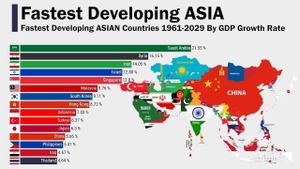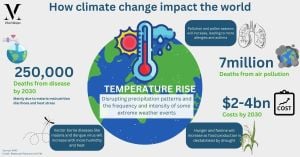At the recent COP29 summit held in Baku, Azerbaijan, finance, climate change, and the global banking system intersected dramatically as leaders from around the world gathered to address urgent climate challenges. Among the key discussions was the panel on 'Global Financial System: Scaling Up Financing for Climate Action,' where financial institutions outlined their commitments and strategies to drive sustainable investments forward.
Zakir Nuriyev, President of the Azerbaijan Banks Association, emphasized the significant steps Azerbaijani banks are taking under the "Sustainable Finance Roadmap 2023-2026." He expressed enthusiasm about integrating sustainable and green finance principles within the banking framework. “Banks have begun to embed these principles across their strategies, governance frameworks, and risk management practices, aligning closely with climate risk management recommendations set forth by the Central Bank of Azerbaijan,” Nuriyev stated. Sustainable finance is no longer just on the horizon; it's being operationalized right now.
The European Investment Bank (EIB) is also stepping up its game. Vice President Ambroise Fayolle highlighted the launch of the Global Green Bond Initiative, aimed primarily at hastening the issuance of green bonds, particularly in developing nations where they are currently scarce. “We want to change the narrative around green bonds,” Fayolle asserted, stressing the importance of financing not just for cleaner energy but for comprehensive sustainability projects. The EIB’s initiatives are expected to drive investments totaling around €20 billion, providing financing avenues previously deemed inaccessible.
Meanwhile, Yingming Yang, Vice President at the Asian Development Bank (ADB), underscored the urgency of strengthening climate-resilient financial systems across developing regions. “Our focus is on enhancing the capacities of financial intermediaries to widen lending to climate projects,” Yang remarked. His commitment resonates with many developing countries feeling the ramifications of climate change now more than ever, putting pressure on global financial systems to adapt swiftly and efficiently.
The COP29 discussions were not just focused on immediate financial strategies but were also broadly about going beyond traditional lending practices and building frameworks for climate finance which are comprehensive and targeted. These frameworks aim not only to support economic growth but also to stave off the risks brought by our rapidly changing climate.
This effort aligns with the underlying principles of the UN Framework Convention on Climate Change. The pivotal role of financial institutions, both local and international, is increasingly recognized as they are tasked with leading sustainable economies through innovative financial products and services. The conference marked the beginning of what many hope will be transformative changes leading to more substantial commitments to sustainable finance worldwide.
Assessing the challenges financial institutions face today reveals extensive gaps needing to be addressed. Besides the evolution of lending practices, the adaptative strategies to climate risks presented at COP29 showcased different approaches worldwide, often conflicting based on local political landscapes. For example, contrasting regulatory frameworks between the US and European institutions spoke volumes about the gaps needing attention. While the European Central Bank is determined to enforce stricter climate-risk disclosures for banks, the Federal Reserve has resisted endorsing similar regulations, citing concerns over mandates. According to recent reports, the Fed has recently indicated it would prefer not to lead the charge on enforcing climate-related disclosures, signaling to critics both domestically and globally its hesitancy.
This backdrop of hesitation is reflected against the backdrop of rising global interest and urgency over climate risk management. Observers on the financial and climate front lines express concern over such retrenchment, particularly as countries worldwide face increasing pressure from their citizens to act decisively on climate change. Recently, key global institutions have rallied behind stringent regulatory measures for transparency on climate risks—an effort many argue is direly needed.
A growing swarm of scientists and climate activists has highlighted how underestimations of climate impacts could lead financial systems to crumble. Recent updates from the Network for Greening the Financial System (NGFS) showed alarming projections indicating this underestimation might lead to massive economic losses, potentially as high as 33% of GDP by the year 2100 without significant climate action. Sandy Trusk from the Institute and Faculty of Actuaries stressed the importance of capturing true climate risks accurately to avoid future economic calamities. “If we continue to understate climate risk, we will inevitably face more significant setbacks—a reality many haven’t fully grasped yet,” he warned.
At the same time, international conversations are considering how to structure various forms of climate finance effectively. Carbon pricing remains part of discussions but has been criticized for only addressing part of the solution. Countries need diverse strategies for increased domestic and macro-consistent external finance, enhancing the overall financial resilience against climate shocks. The stark reality based on recent analyses reveals the potential for unsustainable borrowing if not tackled effectively; this inevitably links back to the roles both funding and financial institutions play.
There are broader global discussions taking place about the International Monetary Fund (IMF) and World Bank's roles, too. Many are advocating for the IMF to expand its focus on climate action as part of global development strategies. A report from the Task Force on Climate, Development, and the IMF suggests transformative measures to improve the IMF’s approach to climate finance, including restructuring lending and enhancing its surveillance operations to incorporate climate risk analyses effectively.
This idea of customizing financial institutions' operations corrals them toward climate action. The realization is dawning upon leaders both at national and institutional levels: the future depends on the agencies being willing to adjust their mandates for the sake of climate resilience.
On the ground, countries are beginning to manifest this shift. Take Azerbaijan—it’s not just reaping benefits from its geographical position between the East and West but is increasingly adopting ambitious sustainable projects. The announcement of new partnerships for renewable energy with Chinese firms is just one example where nations are aligning their financial aims with climate goals. This progress marks not just localized gains but demonstrates how developing countries can champion their agendas on the global stage, redefining their contributions to climate action.
Indeed, the future looks promising yet challenging, as reflected at this pivotal conference. Participants at COP29 grasped the urgency of their conversations amid pressing global issues fueled by climate change, from economic devastation to social instability. They know they have momentum but realize the window for meaningful action is rapidly closing.
The discussions at this year’s COP summit encapsulated the spirit of collaboration needed to tackle outstanding climate crises. Moving forward, it will be less about individual countries and institutions acting independently and more about collective action—a realization prompting participants to innovate, engage, and push for transformative change.
With powerful dialogues spurred on by COP29, the roadmap for integrating climate finance with economic policies promises to gain unprecedented traction. Global financial frameworks, influenced heavily by climate strategies, could pave the way to more prosperous and sustainable futures worldwide, making this summit not just another meeting but potentially the catalyst for lasting change.
Yet, many are left wondering how effective these discussions will translate to on-the-ground actions. The lack of binding commitments from major players raises questions about accountability once the spotlight fades. The hope is leaders will take these sessions to heart and act decisively before the window of opportunity narrows dramatically. Climate change will not wait, and neither should we.



